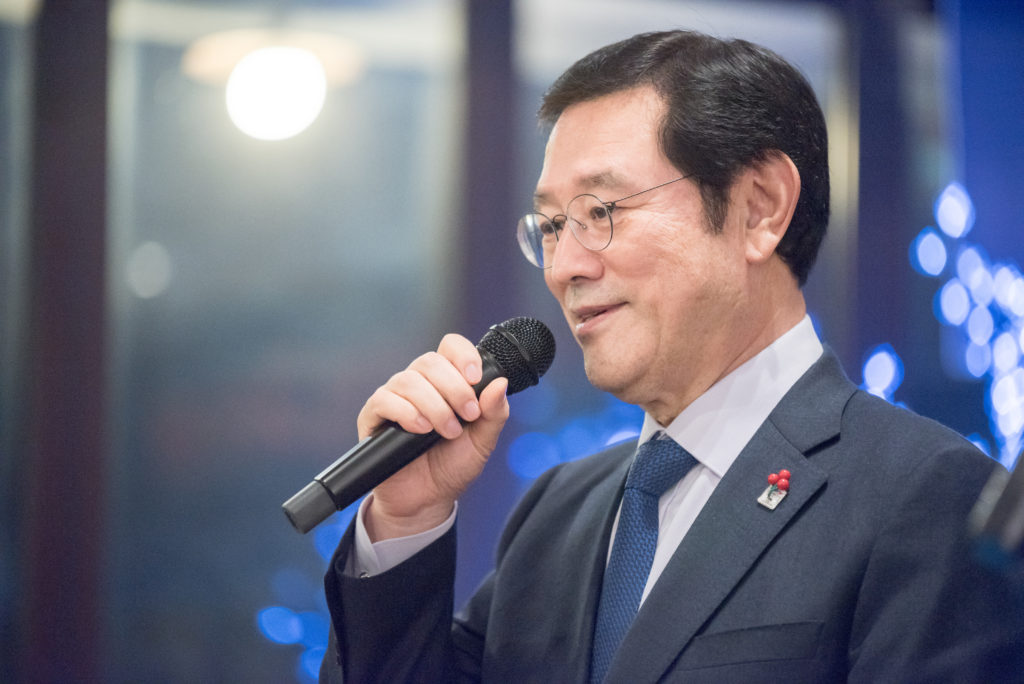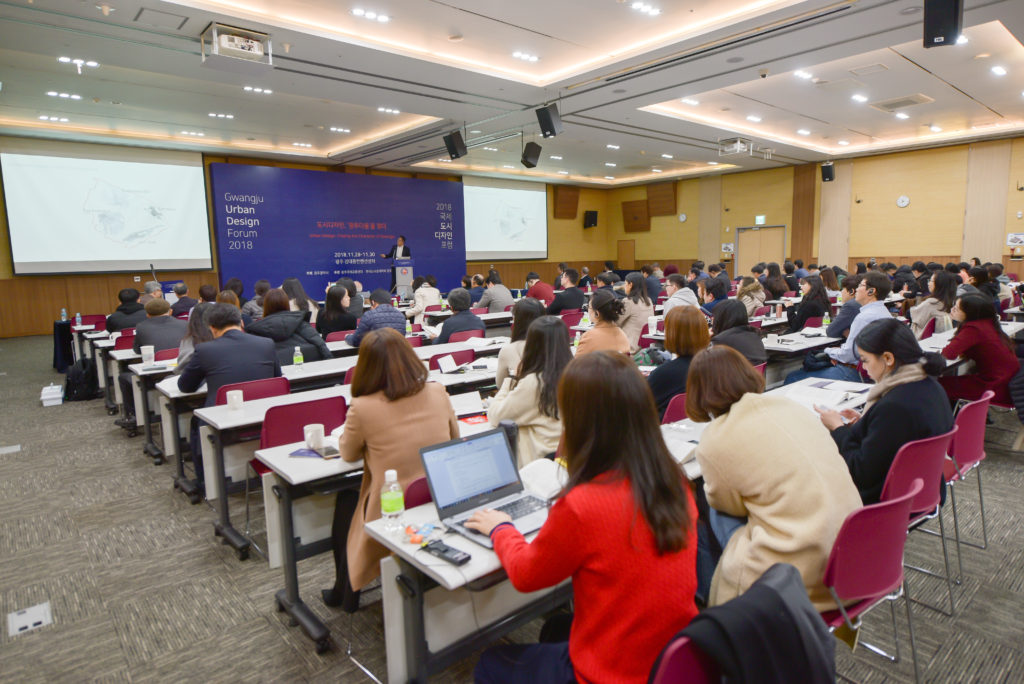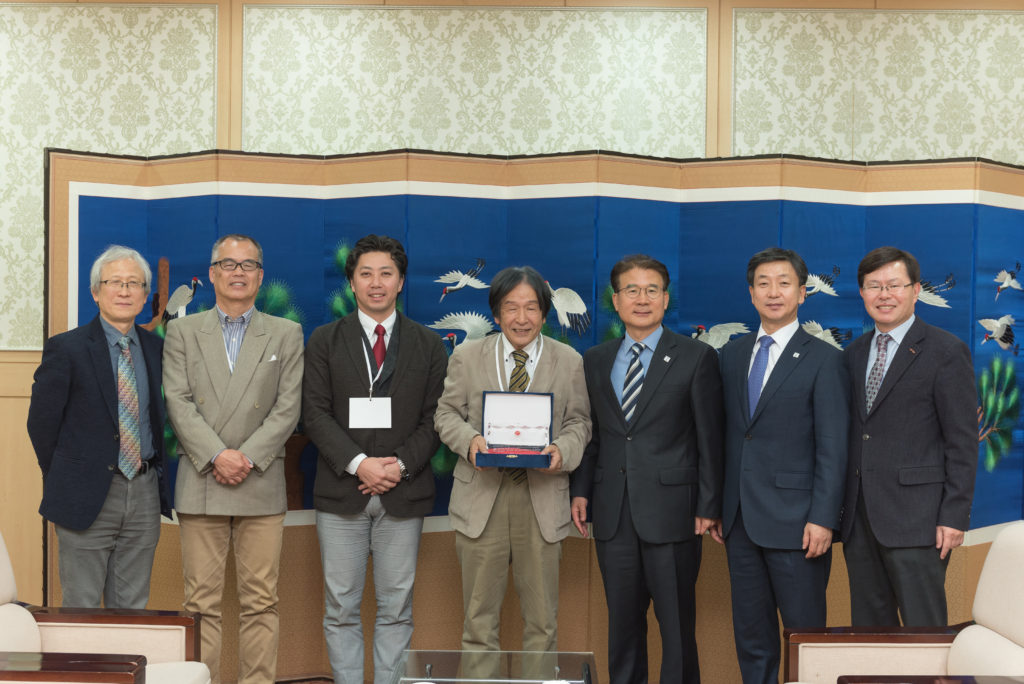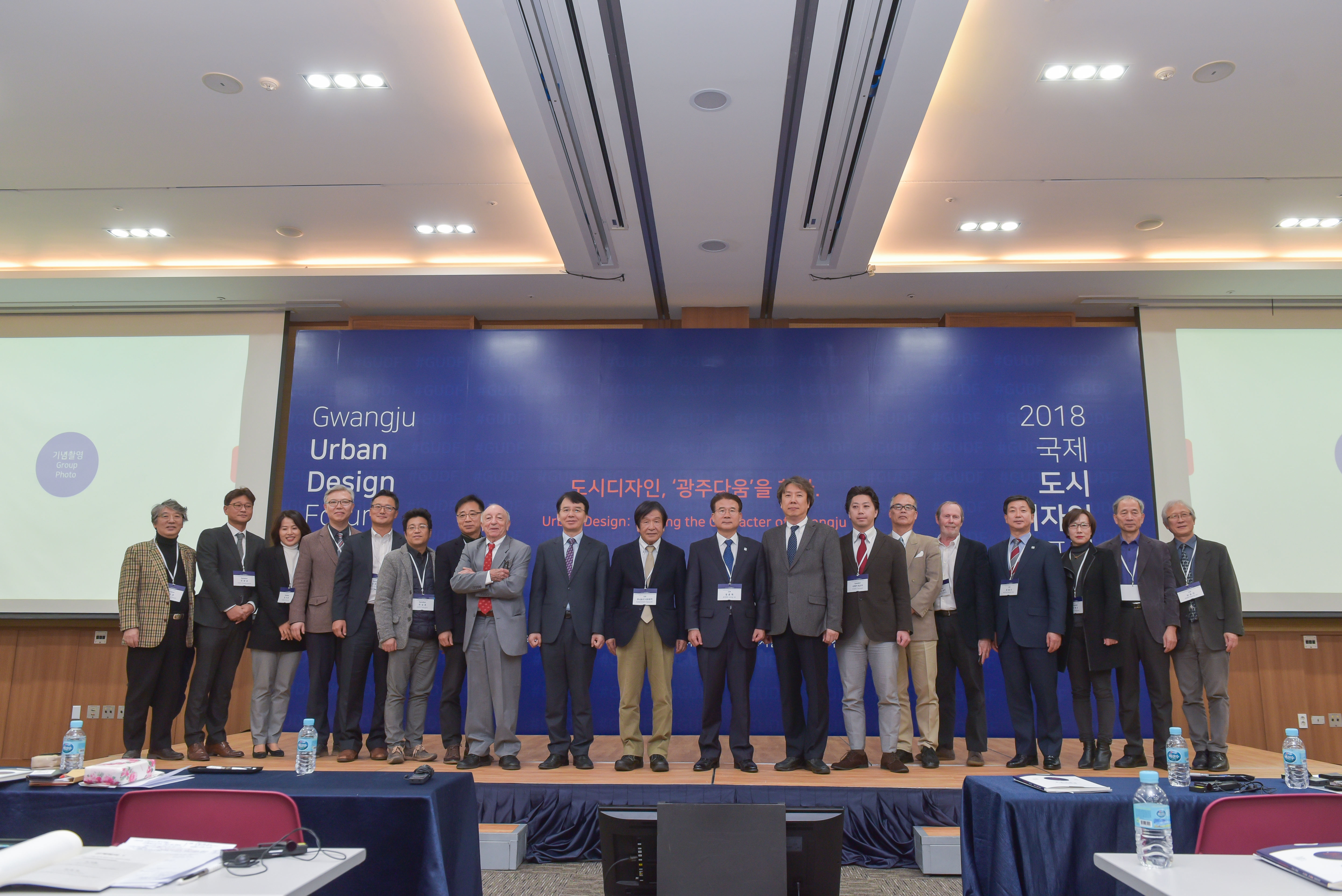Gwangju Urban Design Forum How to Find the Character of a City
Written by Jennifer Marlton
Photographs courtesy of Gwangju Urban Design Forum Secretariat
The Gwangju Urban Design Forum is an annual forum that brings together people from around the world, including students, professors, and experts in architecture, engineering, and design. Urban planning in a city can have a huge effect on the inhabitants’ quality of life. There are many factors that can influence the need for change or growth within a city, such as climate change, modern industrialization, culture and art, livability, aesthetics, and suburban activities.
The Gwangju Urban Design Forum is hosted by the City of Gwangju and is supported by various institutions, including the Gwangju International Center and the Urban Design Institute of Korea. The recently concluded forum was held November 28–30 at the Kimdaejung Convention Center. The subject of the forum was “Finding the Character of Gwangju.” The urban design in Gwangju has been attempting to showcase the history of Gwangju and its culture. The idea of the forum, however, was to complement this to better show Gwangju’s unique identity and how it will respond to future economic and social variables.

At the back of the hall was a display of the winners of the 100 best architectural designs of 2018 – ideas that showed stunning designs, showcasing the effect that architecture can have on the presence of a city. One of the displays featured designs at Haeundae Beach in Busan. Many travelers know the effect architecture can have when traveling through different cities. The urban design of a city speaks to its culture and beauty, but the design of a city can affect things such as sewerage, waste and water management, heating, and air conditioning. It can also affect pollution levels, as cities with good transit systems have less pollution, fewer accidents, and fewer space-taking parking spots.
The introductory speech noted that Gwangju had been recognized in the past in three specific areas: justice, arts and culture, and cuisine. These forums have already contributed to the urban regeneration of Gwangju Station, the Chonnam University area, and the Gwangju-Songjeong Station Project. The design for Gwangju is centralized around showing its human rights history. There are many structures, relics, and areas around Gwangju that are specifically designed to show this history. The forum recognized the need for Gwangju to be able to place itself amongst a society that is constantly changing, especially while the fourth industrial revolution is taking place. The fourth industrial revolution is the rapidly developing technologies that connect billions of people around the world and new advances in things such as artificial intelligence. This revolution has the power to raise income levels and improve the lives of millions around the globe.

Prof. Woo-young Kim discussed his view that people should live close to where they work, because this cuts down on transportation time and allows people to enjoy where they live more fully. He quoted Jan Gehl, a famous architect, who said, “Planners looked down on the scale of cities. What they missed was the environment at eye level.” Kim stressed that cities should be viewed from inside for how they are lived in, not how others view them from above.
Other cities were mentioned as examples in the speeches made during the forum. Prof. Guy Burgel, talked about a map study of Lyon in France. He discussed the “competitive international metropolis, small and medium-sized cities…and rural agricultural regions isolated from urban centers.” The study of this city showed a small elite group who worked to retain the culture of the city after recession and kept it competitive with the rest of Europe. There were many changes over the years with population increases and the gap between the rich and the poor widening, as well as sprawling urbanization. This was compared to another city, Parduil, and the extensive redevelopment there, through the addition of living spaces, shopping centers, jobs, and green centers. However, in both of these rich cities, while the development increased the value of the economy and appearance of the city, it did not necessary help the poor in the region. His lesson for Gwangju was that a city’s history and culture can determine a different future for it than for other cities, even with the same conditions applied. A city belongs to the citizens and the government, and cannot be changed simply with scientific reasoning.

Gwangju Urban Design Advisor from Japan.
This forum included a youth camp for students from cities that are considered to display East Asian culture. The students had a chance to contribute to their own design project that would in turn contribute to Gwangju. Some of the students who attended the forum spoke at the final question-and-answer session. They were efficacious in pointing out the opportunity the forum gave them to experience and explore Gwangju from an urban design point of view with other similarly minded students. There were students from China, Indonesia, and other East Asian countries present. They spoke about experiencing a different culture based on the urban design of the city and what this meant that they could take back to share with their home countries.
There were many speakers and the visitors explored different aspects of Gwangju’s unique urban design. It was a successful forum that, it can be hoped, will pave the way for more successful urban development in Gwangju!
The Author
Jennifer has been living in Korea for just over a year and, in that time, has experienced many facets of Korean life. She is very interested in culture and traveling, and there has been a lot to explore in Gwangju and the surrounding regions. She has majored in journalism and has enjoyed getting back into writing while in Gwangju.





